Discovering Filipino Street Food: 10 Street Food Dishes to Try in the Philippines
- Balut
I’ve arranged this list in alphabetical order so it’s purely by coincidence that it starts off with one of the Philippines’ most infamous street food dishes, balut. For the uninitiated, balut is a fertilized egg incubated for 14-21 days, boiled, then eaten directly from its shell. It’s typically made with duck eggs, specifically native or Pateros duck eggs, but it can be made with chicken eggs as well if the former isn’t available. When it comes to Filipino dishes fit only for the daring, balut is arguably at the top of the food chain.
Depending on how long it’s been incubated before being boiled, you’ll find balut with the embryo in different stages of development. The ideal incubation period is said to be exactly 17 days. At that stage, the embryo is completely soft and unrecognizable save for its developing feathers. But I have gotten much bigger embryos that already resemble ducklings! Those typically have harder bones and beaks and are more difficult to stomach, even for seasoned balut eaters.
Balut is often seasoned with salt and/or a chili, garlic, and vinegar mixture, but I’ve always eaten it as is. We Filipinos know how off-putting balut can be for many tourists, so we get a kick out of challenging them to eat it. Most chicken out.
You might also come across a version of balut called “penoy”. These are the balut eggs that don’t properly develop after 9-12 days. Balut penoy is like a hard-boiled egg with no separation between the yolk and egg white, kind of like a semi-scrambled egg still in its shell. I prefer the real thing.
Filipino Food Guide: Discovering Philippine Street Food
Expect to Pay: Around PHP 15 per balut, PHP 12 per balut penoy
- Banana Q / Kamote Q
Unlike balut that can be intimidating even to Filipinos, Banana Q (or cue) isn’t scaring anyone away. It’s a skewered deep-fried sweet plantain coated in caramelized brown sugar. Equally popular as a street food and as a snack made at home, it’s something that many Filipinos grew up eating.
Filipino Food Guide: Discovering Philippine Street Food
As described, many Filipinos grew up eating banana q at home for merienda (midday snack) or after school, so it’s something many of us think of fondly. It’s a comforting snack that brings us back to our childhood.
Filipino Food Guide: Discovering Philippine Street Food
The bananas used to make banana q are called saging na saba or saba bananas. They’re frequently used in Filipino cooking to make desserts like turon, halo-halo, minatamis na saging (banana with caramel sauce), and maruya (banana fritter). They’re even used to add sweetness to savory dishes like arroz a la cubana and pochero.
This may sound odd to some westerners, but we Filipinos have a type of ketchup made with saba bananas. Called banana ketchup, it’s a sweetened version of regular ketchup that was invented during WWII due to a lack of tomatoes. Today, it’s arguably more popular than tomato ketchup and is a perfect condiment to oily, deep-fried foods.
Filipino Food Guide: Discovering Philippine Street Food
Kamote q is a version of banana q made with camote or sweet potato.
Filipino Food Guide: Discovering Philippine Street Food
Expect to Pay: Around PHP 10 per stick of banana or kamote q
- Buko
Buko is the Tagalog word for young coconut. I’ve lived in the Philippines most of my life and I never thought of buko as street food, but I guess you can say it is. Aside from being used in Filipino cooking, fresh buko sold in wooden pushcarts is a common sight in the Philippines, even in big cities like Manila.
Buko vendors will hack the coconut in front of you and serve it with a straw so you can drink it on the spot. If you don’t want a whole coconut, many vendors also offer buko juice made with condensed milk and strands of freshly grated coconut meat. I actually prefer the latter because it’s usually served chilled, but I find fresh buko juice to be refreshing even at room temperature.
I didn’t know this growing up but buko juice is said to be very good for you as well. Apart from being an excellent way to stay hydrated, it’s also known to prevent kidney stones, reduce sugar levels, regulate blood pressure, and improve digestion.
Filipino Food Guide: Discovering Philippine Street Food
Expect to Pay: Around PHP 28 for one whole coconut
- Bulaklak
This is an interesting street food dish, even for Filipinos. Bulaklak refers to pork chitterlings or mesentary. It refers to the folds of tissue that attach the small intestines to the back of the abdominal wall.
What makes this particular bulaklak interesting is how it’s cooked. Bulaklak is typically served as a deep-fried dish called chicharon bulaklak. I’ve never seen chicharon bulaklak served as a street food but it’s one of the most popular Filipino bar chow dishes. Go to any Filipino bar and chances are you’ll find chicharon bulaklak on the menu.
This particular version however, is called inihaw na bulaklak which means it was grilled instead of being deep-fried. I don’t know where it originated from but it’s nowhere near as ubiquitous as chihcaron bulaklak. Recently, we’ve seen a couple of food park stalls in Manila serve it so the trend may be catching on. As you’d expect, it isn’t crunchy like the deep-fried version but it’s smokey, less sinful, and every bit as delicious with beer.
Filipino Food Guide: Discovering Philippine Street Food
Expect to Pay: Around PHP 15 per stick
- Empanada
Like in many Spanish-speaking countries, empanada is popular in the Philippines. Fillings vary greatly but Filipino empanadas often contain ground meat (beef, pork, or chicken), potatoes, onions, carrots, peas, and raisins wrapped in dough that’s either baked or fried.
I’m not sure if empanada is commonly sold as street food in Manila, but in Vigan, which is home to arguably the most famous type of Filipino empanada, it definitely is. Unlike other varieties, Vigan empanadas are orange in color and much bigger. It gets its color from achuete or annatto seeds which is the same ingredient used to color kwek kwek and tokneneng. Vigan empanadas are also deep-fried, resulting in a crispy shell-like dough that’s very different from the soft, semi-sweet dough used in other types of Filipino empanadas.
Fillings vary but Vigan empanadas typically contain grated green papaya, mung bean sprouts, shredded carrots, skinless Vigan longganisa (Filipino sausage), and a whole egg. As you’ll see in the video towards the bottom of this post, the monster Vigan empanada we had was made with two eggs. Like Vigan ukoy, empanadas are typically served with a spiced vinegar dip to help offset the oiliness.
Until a few years ago, you had to go all the way to Vigan to enjoy this type of empanada. Thankfully, it’s become more widely available in Manila in recent years. You can find it at some food park stalls and small restaurant chains specializing in Vigan empanada.
Filipino Food Guide: Discovering Philippine Street Food
Expect to Pay: Anywhere from PHP 25-75, depending on the size
- Fish Balls / Chicken Balls
If balut is the most infamous street food, then fish balls are arguably the most iconic. Many Filipinos grew up eating it so for us, fish balls are the quintessential street food. They’re basically balls of flour made with some type of flaked fish meat.
Of all the street food dishes we tried today, fish balls were the ones I was most excited about. Unlike banana q or turon, a stick of fish balls wasn’t something you could easily have at home, at least not the authentic kind.
To be honest, the fish balls we had today were more like that supermarket variety. They were crunchier and bigger, unlike the soft, flat-ish fish balls I remember from my school days. These seemed different from the ones we grew up with. Evolution of street food I guess?
Filipino Food Guide: Discovering Philippine Street Food
Speaking of street food evolution, these weren’t around in our youth either. We were surprised to find that the fish ball vendors of today also sell chicken balls. They’re bigger and almost double the price of fish balls.
Even though they’re not how I remember them to be, eating fish balls today brought back a flood of fond boyhood memories. Growing up, I remember how pushcart vendors would wait outside our school with pans of deep-frying fish balls. We’d gather around the pan and stab fish balls with thin barbecue sticks before dunking them in one of three sauces. I didn’t know what was in the sauces back then, but one sauce was brown and sweet, another was spicy (vinegar with chili), and the third was a combination of the two. I always went for the sweet. Good times. :)
Filipino Food Guide: Discovering Philippine Street Food
Expect to Pay: Around PHP 2 for every 3 pcs of fish balls, PHP 2.50 for every 2 pcs of chicken balls
- Isaw (Pork or Cicken)
Like fish balls, isaw is one of the most iconic Filipino street foods. I wasn’t exposed to it as much growing up but many people say it was a legendary street food at UP Diliman. I read that students from all social classes would line up for their isaw at the many streetside grilleries near campus.
Isaw refers to barbecued pig or chicken intestines that are thoroughly cleaned before being boiled, skewered, and grilled. Pictured below on the left is the pork isaw while to its right is the chicken. Like the other grilled skewered dishes on this list, isaw is typically served with a spiced vinegar dip.
Like walkman, Filipinos have funny colloquial names for chicken and pork isaw as well. Chicken isaw is also referred to as “I.U.D.” because it’s said to resemble older designs of intra uterine devices. Pork isaw is called “mag wheels” because it looks like…well, mag wheels! :lol:
Filipino Food Guide: Discovering Philippine Street Food
Expect to Pay: Around PHP 10 per stick
- Kwek Kwek / Tokneneng
Kwek kwek is a hard-boiled quail egg that’s coated with an orange batter and deep-fried until crispy. They’re pretty much exactly how you’d imagine them to taste, like eggs deep-fried in tempura batter. The batter itself is flavorless so I have no idea why it has to be orange. Perhaps just to make the kwek kwek look more appetizing? If that’s the reason, then it works.
Filipino Food Guide: Discovering Philippine Street Food
Unlike fish balls that have been around for as long as I can remember, kwek kwek seems to be a relatively new Filipino street food that’s been around only for the last 20 years or so. It’s served with a spicy chili-vinegar dip. You can find kwek kwek in some bars as well. The bite-sized portions make them an ideal bar food.
Filipino Food Guide: Discovering Philippine Street Food
Tokneneng is basically the exact same thing as kwek kwek except it’s made with hard-boiled chicken eggs.
Filipino Food Guide: Discovering Philippine Street Food
Expect to Pay: Around PHP 12 per stick of kwek kwek
- Lugaw (Goto / Arroz Caldo)
Lugaw refers to a thick Filipino rice porridge that’s similar to Cantonese-style congee. It’s boiled with strips of fresh ginger and often topped with scallions, crispy fried garlic, and other seasonings. Lugaw is a popular street food dish that’s also commonly eaten at home. I remember my dad often eating it whenever he felt under the weather.
If I understand correctly, the term lugaw refers to plain rice porridge. When it’s served with different types of beef and pork offal like tripe, intestines, and tongue, it becomes known as “goto”. When served with chicken, it’s referred to as “arroz caldo”. But they’re all pretty much the same thing – rice porridge.
Whether it be lugaw, goto, or arroz caldo, I like the dish best when paired with tokwa’t baboy. Tokwa’t baboy is a side dish of boiled pork and deep-fried tofu served with vinegar, soy sauce, shallots, and chili. Nothing beats this pairing on a rainy day. Yum!
Filipino Food Guide: Discovering Philippine Street Food
Expect to Pay: Around PHP 30 per bowl of lugaw with egg
- Mais
Like buko, I’ve seen mais (corn) sold on Manila’s streets for as long as I can remember but I’ve never really considered it as Filipino street food. Perhaps it’s because of the way it’s presented. Unlike Mexican elote for example, which is grilled until charred then seasoned with a cream sauce, Filipino mais is basically just boiled corn on the cob. Nothing about the way it’s prepared makes it uniquely Filipino. But if it’s sold on the street often enough, then it technically qualifies as street food which is why it’s on this list.
Filipino Food Guide: Discovering Philippine Street Food
Our mais or boiled corn on the cob. It isn’t the most interesting or exciting dish on this list but it does have its fans.
Filipino Food Guide: Discovering Philippine Street Food
Expect to Pay: Around PHP 15 per corn cob
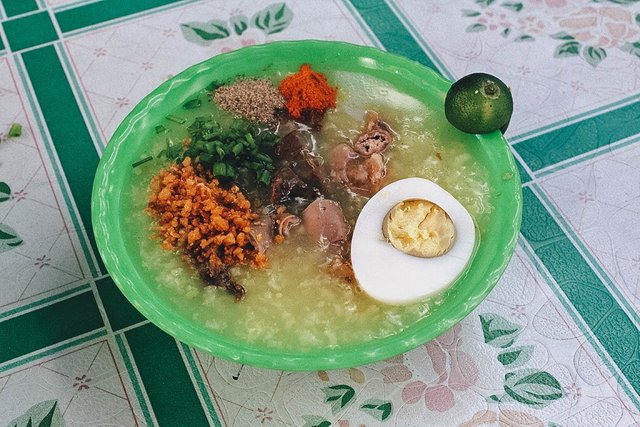
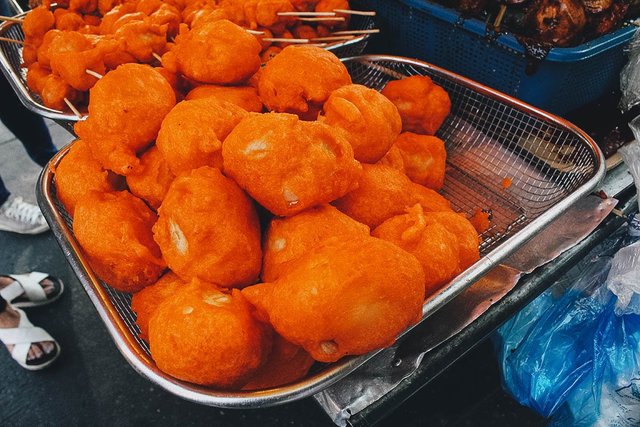
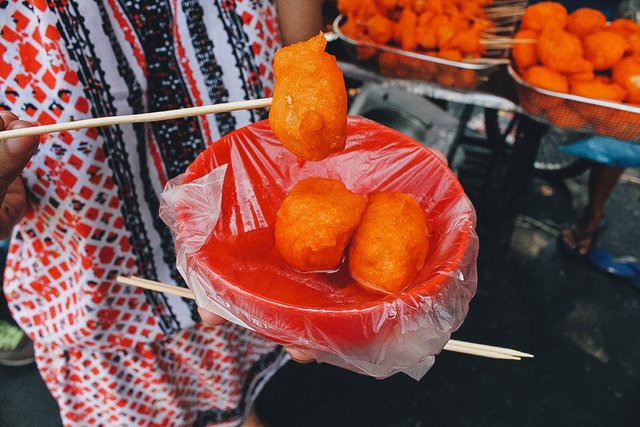
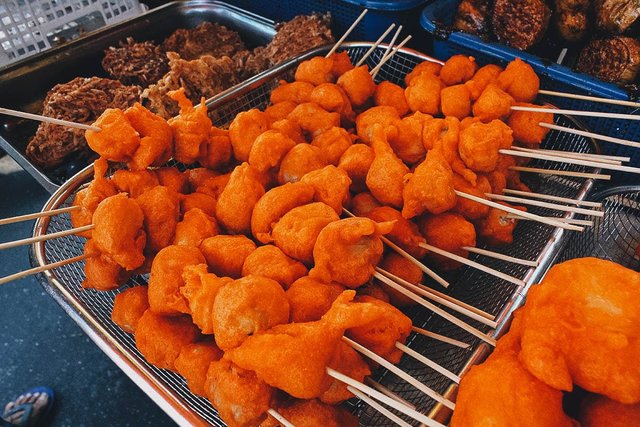
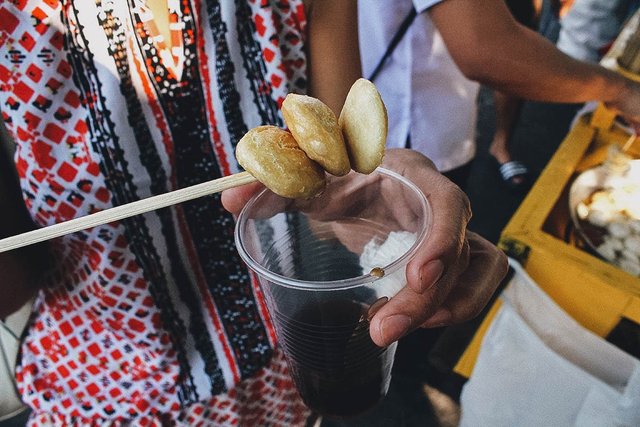
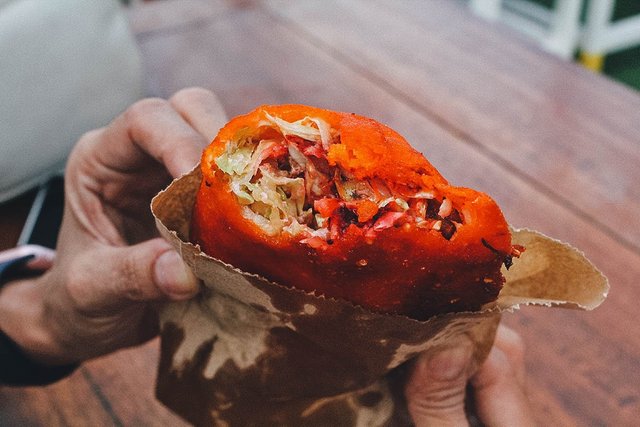
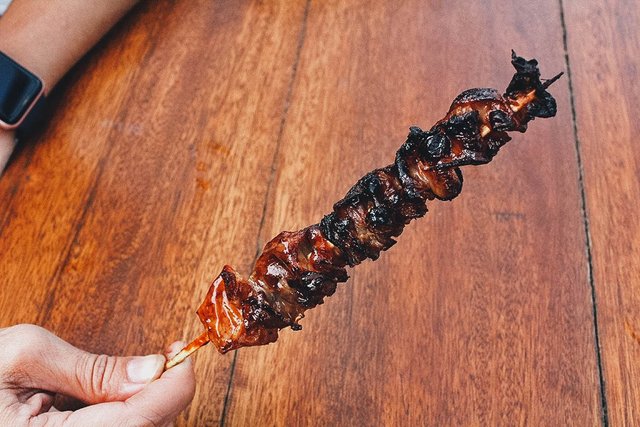
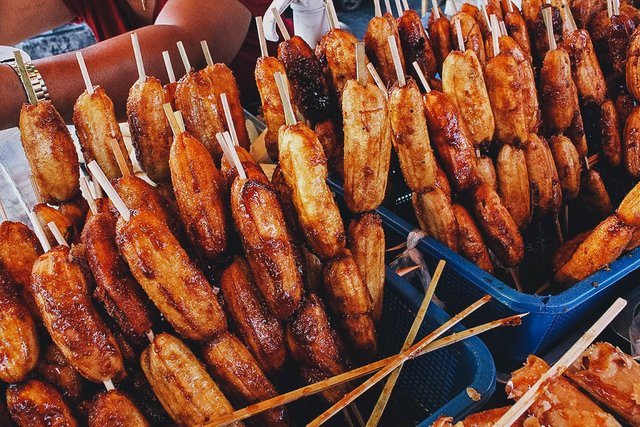
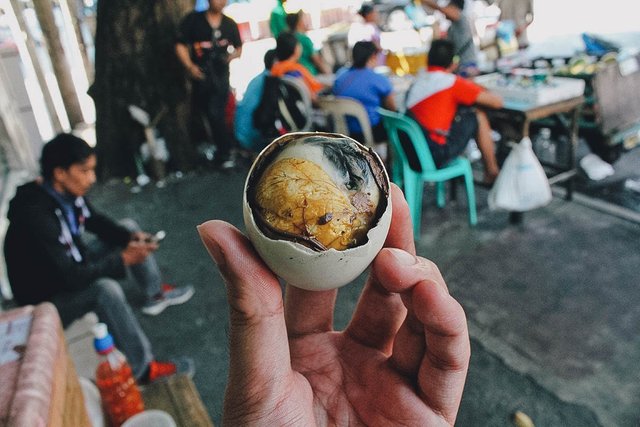
You just said Bulacan. I was wondering if you live in Bulacan? We're actually looking for an authors who are from Bulacan or someone who live in Bulacan.
no I'm not from Bulacan. I'm from Leyte.
Hello boss tiga saan ka pala? Tiga Bulacan ka ba?
I'm from Leyte